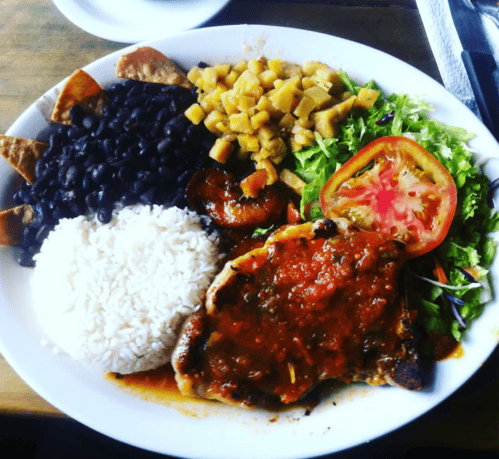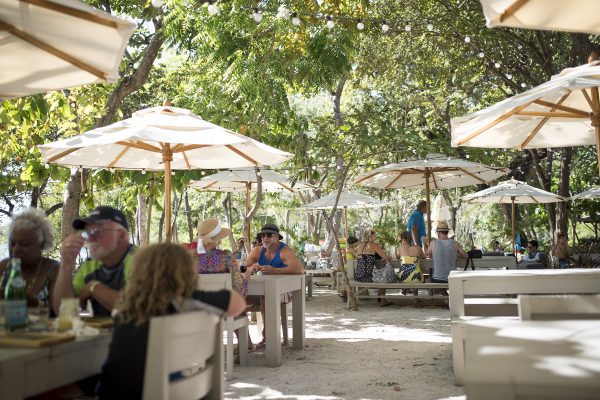Wednesday, October 2nd, 2019.
In this Daily: The Nutritional Balance of the Casado
The casado is one of the iconic national dishes of Costa Rica, and one of the building blocks of the Costa Rican diet. Translating to “married man”, these lunches first came to prominence back in the 20th century, and were modeled after the meals wives would pack for their husbands to eat during a hard day of work, which included rice, beans, a protein, a salad, a vegetable picadillo, and fried ripe plantains.
Now, casados are found across the country, and no two are the same. Picadillos can feature a mix of any number of seasonal local vegetables. Some parts of the country mix things up by offering rice & beans (another traditional Costa Rican dish), and patacones instead of the trio of rice, beans, and plantain. Every soda and restaurant have their own take on proteins, including veggie and vegan options.
However, the general ingredients of this meal are the same wherever you go. Part of this is due to tradition, but there’s a strong scientific basis for why this meal provides a balanced source of nutrition to rejuvenate and refuel day after day.
 Costa Rican Casado | PC: Commons
Costa Rican Casado | PC: Commons
The Balance of Nutrients
Nutrition in a casado comes down to two key elements: a mixture of carbs, proteins, and fats, and a balance of different vitamins and minerals.
Rice is a concentrated source of carbohydrates, a quick-release energy source that provides a boost of energy shortly after eating.
Beans are a source of lean protein, some complex carbohydrates, and a strong source of iron and other minerals. Lean proteins and complex carbohydrates give a longer term release of energy that kicks in on the tail end of the simpler carbohydrates of the rice, and the iron and other minerals help keep the body’s natural processes moving.
Proteins, usually in the form of pork, fish, chicken, beef, or vegetarian and vegan alternatives, are a moderate-to-long term energy source. These proteins also tend to be dense in healthy organic fats, which provide the longest term energy release.
Cooked plantains have a high density of natural sugars, which gives an immediate boost of energy (and often times a lift to the mood), a good holdover until the rice begins to digest.
Salads can have lettuces, carrots, beets, tomato, cucumber, and as well as regional fruits and vegetables, which offer a balance of key vitamins and minerals which are needed to help release energy and keep the body running smoothly.
 Lunchtime at Limonada
Lunchtime at Limonada
A Meal with A Little Bit of Everything
The result is a meal that has a balance of fruit, vegetables, legumes, grains, and proteins, one that is rich in essential minerals and provides immediate, short-term, mid-term, and long-term energy. Casados also tend to be made with proteins and vegetables that are fresh and seasonally available, which helps keep costs down and adds to the flavor.
These changes in the vegetables and proteins also add a pleasant variation to the meal, meaning that even as casados are eaten day after day they still offer fresh new flavors.
In town, Limonada has their own classic version of this staple, with a selection of tenderloin, chicken, snapper, tuna, or shrimp for the protein, as well as a seasonal salad with local vinaigrette.
Served on the beach, these casados are a satisfying taste of Costa Rica that helps with recovery after mornings of physical activity and provides the fuel and energy for the rest of the day.